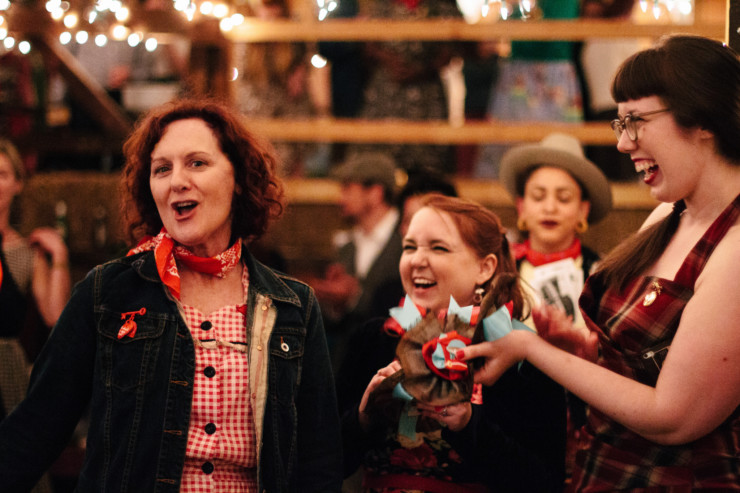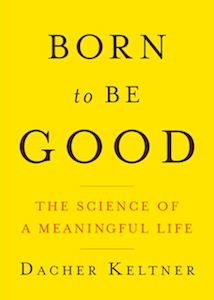There’s an animal called the quokka on the West Australian Rottnest and Bald Islands. Tourists love to run into the furry little critters—which, given their proliferation, doesn’t seem to be too difficult—because they don’t mind taking selfies with them. And they always smile. Besides the myriad articles about how adorable the grinning quokka can be, there are a few out there that will warn of the quokka’s tendency to also behave more like an animal than your average Instagram model, complete with teeth and claws. But mostly you’ll find the stories of the smiles, and I’m pretty sure you’ll find yourself hard pressed to resist smiling back.
Despite the Internet naming it the happiest animal on earth, the quokka’s smile seems more related to evolution than emotion. In the way of Jessica Rabbit, they’re not happy, they’re just drawn that way. But there are ways in which the emotional aspect of the smile did follow the evolutionary paths. Dacher Keltner says in Born to Be Good that, like the smile of the quokka, the “right kind of smile brings the good in others to completion. It is,” he goes on to explain, “one of the first acts of jen in primate evolution.”
In the reading for this week’s book club, Keltner considers the origins of the smile, and asks, “What are the roots of human happiness? If the right kind of smile is synonymous with happiness, which intuition and dozens of scientific studies suggest is the case, then our search back in time for the social contexts in which the smile emerged is really a search back in time for the origins of human happiness.”
This study led to research done by Signe Preuschoft in which we see the possible origins of the deferential smile of we humans (silent, bared-teeth) as related to the silent bared-teeth smile common in primates when assuming a submissive, appeasing posture. We learn that there is an abundance of different types of smiles, not all related to happiness. “People have been shown to smile when winning, losing, watching a film of an amputation, eating sweets, facing adversaries, experiencing pain, feeling affection toward loved ones.” To understand what type of smile we’re seeing, researcher Paul Ekman sends us off in search of the “happiness muscle.”
The orbicularis oculi is the muscle around the eye that contracts when we smile. Understanding the orbicularis oculi takes us to the Duchenne smile, named for the scientist who discovered this ocular connection to the smile. According to Duchenne’s research, a smile that does not involve the orbicularis oculi is “likely masking negative states.” But a smile that does—called the Duchenne smile or D smile—will activate the frontal lobes of the brain, which is the part of the brain that takes part in positive emotional experiences. Even better, employing a D smile has been shown to return our elevated stress levels back to a more normal baseline.
As good as that sounds, the more compelling research may be what we learn about how our smile affects the person on the other side of it. Most notably, when we perceive a smile from another, it releases dopamine, the neurotransmitter which handles “friendly approach and affiliation.” In other words, Keltner explains, “Smiles catapult individuals toward one another, and in the more intimate space produced by mutual smiles a more proximal set of behaviors—touch and soothing vocalizations—kick into action, soothing, calming, and triggering the release of opiates which bring about powerful feelings of warmth, calmness and intimacy.” Social chocolate, he calls it.
Back to the primates. I don’t know how they feel about chocolate. Preuschoft’s research into that silent bared-tooth smile found that among groups of monkeys that live in a more egalitarian hierarchy, that deferential smile is not used simply to communicate appeasement and submission as a means of self defense, but that the smile has been adapted for uses to “promote affectionate cooperation and affiliation . . . In egalitarian primates, the silent bared-teeth display folded into affiliative, pleasurable exchanges.”
Whether it’s monkeys or people or quokkas, the smile brings us closer together. Though I’m not so sure I’d want to be that close to the quokka.
***
We’re discussing Born To Be Good: The Science of a Meaningful Life in our book club this month. Are you reading along? What do you think of the jen ratio? Is it a valid reflection of our efforts to stay “human”? What good have you brought to completion in another today? (Is it time to work on your ratio?)
Share your thoughts in the comments, and join us again next week as we conclude our conversation.
Our reading schedule:
Announcement Post
January 10: Chapters 1-4: The Jen Ratio
January 17: Chapters 5-8: Embarrassment, Smile, Laughter, Tease
January 24: Chapters 9-12: Touch, Love, Compassion, Awe
Buy Born to Be Good
Photo by Abby Gillardi, Creative Commons license via Flickr. Post by LW Lindquist.
- Earth Song Poem Featured on The Slowdown!—Birds in Home Depot - February 7, 2023
- The Rapping in the Attic—Happy Holidays Fun Video! - December 21, 2022
- Video: Earth Song: A Nature Poems Experience—Enchanting! - December 6, 2022


L.L. Barkat says
I have been trying this at home. When there are disagreements between the girls, or between me and the girls, I start with the softest of smiles (an all-out D smile seems to be inappropriate at that juncture), and then I catch their eyes and see if I can smile just a little bit more, until we reach D.
At that point, more than half the conflict seems to dissipate. It’s not that the issue doesn’t still exist, but there’s been movement at the physiological level that I believe is part of the de-escalation process. From there, the smile is an invitation to engage in that friendliness and affiliation you pinpoint.
It’s the opposite of allowing an escalating detachment. I thank Keltner for giving me the simplest of tools—readily available to everyone, and completely free. It makes me think that all of us should smile a little more each day, and be sure to spend less time looking at Internet frowns.
#everydaysmiles
🙂
Bethany says
Thanks for this post, LW, and this comment, L.L. 🙂 After reading about the different kinds of smiles, I also tried to stay aware of their impact.
Today, my older kiddo is home sick. I was feeling a bit sad about that and disappointed in how everyone’s schedules had to be rearranged, but I tried to remember how my face could affect another. It’s more than okay to be sad of course (especially considering sickness!). But while we waited for the thermometer to display its reading, I was looking at his face without his glasses on. It reminded me of when he was little. I found myself relaxing into a tiny genuine smile, and I noticed he looked a touch relieved when he saw me, even though he still has a 101-degree temperature.
Will Willingham says
One of the things this kind of smiling does for us as well, which isn’t a point Keltner is making but I think useful all the same, is slow us down. it’s a deliberate act, one that is thoughtful. And while I am turning myself toward smiling in these situations, I’m not blurting out the first thing that comes into my head to say.
Sandra Heska King says
I’ve been trying to be conscious of my facial expression. When my son was young, he’d “accuse” me of having a “mean face.” He’s not the only one who’s noticed that kind of expression. It often happens when I’m not upset but simply concentrating hard on something. So I’ve been trying to be aware of turning a frown upside down even when I’m alone. It makes me feel better, too.
Bethany says
It is hard to imagine you being called out for a mean face, Sandra. 😉
Sandra Heska King says
It’s my focusing face… 😉 😉
Although there *were* times my kids saw a mean face–and I meant it.
Will Willingham says
There’s that whole study of “BRF,” which we won’t go into here, but affects a *lot* of people. And it has an effect on people who see that face, even when the wearer doesn’t feel any anger or irritation or ill will.
(One theory on the quokka is that its smile is a similar phenomena, just in the other direction.)
L.L. Barkat says
BRF? 🙂
Laura Brown says
AKA RBF.
Sandra Heska King says
Ha! I just looked up BRF. I’d rather think of mine as a HFF (happy focus face.)
Laura Brown says
A pleasant thought or warm memory passing through the mind can bring a smile. So does it work the other way around? What you say about a true smile and the frontal lobes suggests that it does. And “employing a D smile has been shown to return our elevated stress levels back to a more normal baseline.” That’s kind of amazing.
Some people seem to smile all the time. I am not one of them. But one of my few resolutions this year is “smile more.” Whether with people or alone. It is a simple, free tool, with — like some other tools — possibly more uses than we know yet.
I’m with you on skepticism about quokka selfies, though.